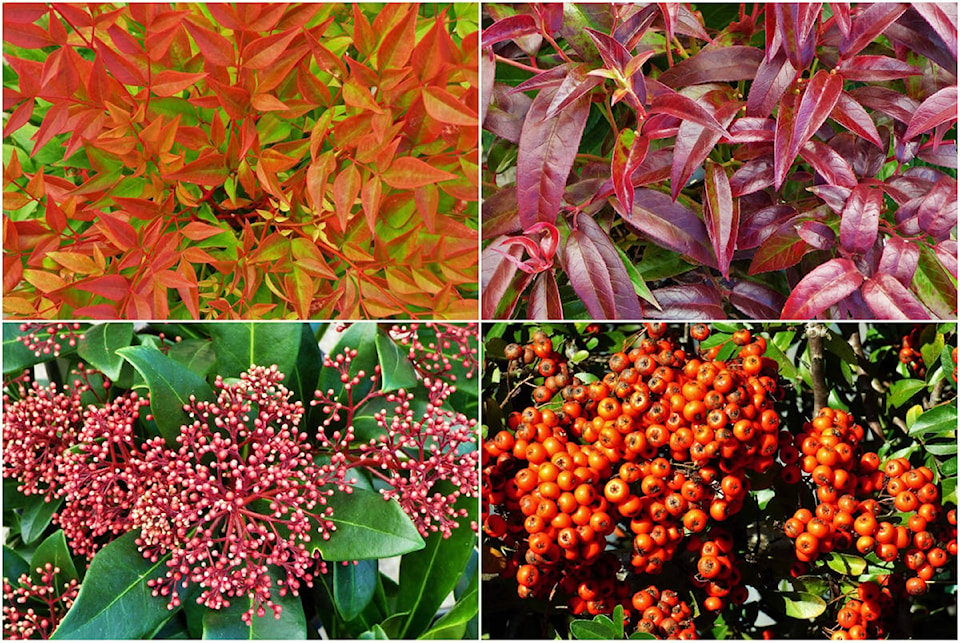Autumn is by far my favourite season of the year, not only because the moderate temperatures are comfortable for working outdoors, but it is also the time we reap the benefits of our edible gardens and enjoy nature’s fireworks in the form of fall foliage.
Seemingly ordinary green trees and shrubs, such as Acer palmatum ‘Osakazuki’ and burning bush (Euonymus alatus), burst into brilliant carmine and rose-red hues, while the birch and ginkgo transition to that beautiful butter yellow.
There are other benefits to this season and one that I have been enjoying daily on my morning cycle is the smell of burnt sugar or caramel corn that the Katsura trees (Cercidiphyllum) emit at this time of year, although I have to admit that, like the fall foliage display, it is a rather fleeting pleasure.
Of course those colours only show up once the days get shorter and the green chlorophyll in leaves begins to break down, unmasking underlying chemicals such as carotenoids (oranges), flavonoids (yellows) and anthocyanins (purples and reds), which are responsible for fall colour. The only problem being that a slight change in weather, water moisture or pH can diminish their display, bringing a hasty end to a season that we would all like to prolong.
So I thought I would introduce you to four broadleaf evergreens that provide a long-lasting display of fall foliage, buds or berries, often lasting throughout the winter. The only proviso I’ll make here is that with the exception of new growth, they are often a boring green during the summer, but quickly morph into garden features with the cooler weather.
• Heavenly Bamboo – Nandina domestica has just one major problem, that being its common name, heavenly bamboo, which denotes to most gardeners that it is as invasive as its namesake. The truth being that this plant is not invasive in Canada and behaves as a clumping broadleaf evergreen shrub. The finely cut foliage does somewhat resemble bamboo but that’s where the similarities end. The species is a large shrub, averaging 2m tall, but in my opinion your best bets are the compact cultivars such as ‘Moon Bay’, ‘Gulf Stream’ and the newer ‘Bonfire’, all of which grow to 60-75cm tall and transform in autumn with brilliant reddish-purple highlights. ‘Firepower’ has coarser foliage, a rounded growth habit and shifts to a brilliant rose-red in the colder weather, retaining it throughout the winter.
• Japanese Skimmia – A common and reliable shade shrub, these durable plants have glossy green foliage that works well in cold season planters. Females will bear bright red berries for much of the winter, while the males provide a dazzling show of flower buds that persist until March, when they open to fragrant white flowers. Two male cultivars in particular are worth seeking out as both ‘Rubella’ and ‘Rubinetta’ produce abundant dark red buds even at a young age.
• Leucothoe – A vastly underrated evergreen shrub suited for partial shade exposures, both Leucothoe fontanesiana and axillaris take on deep red to purplish highlights with the onset of cooler weather and retain this until spring. Cultivars worth seeking out include the dwarf ‘Scarletta’ (new growth is also red), ‘Little Flames’ and the taller ‘Rainbow’, which also has creamy-yellow highlights.
• Pyracantha – The common name for this evergreen climber is well-earned, as Firethorn irritates the skin with every scratch. That said it does make it useful for training espalier-style along fences or near gates where climbing is discouraged. The bright red (‘Cherry Berry’), Orange (‘Mohave’) or Yellow berries (‘Saphyr Yellow’) last for months and are much favoured by Cedar Waxwings.
Mike Lascelle is a local nursery manager and gardening author (hebe_acer@hotmail.com).
